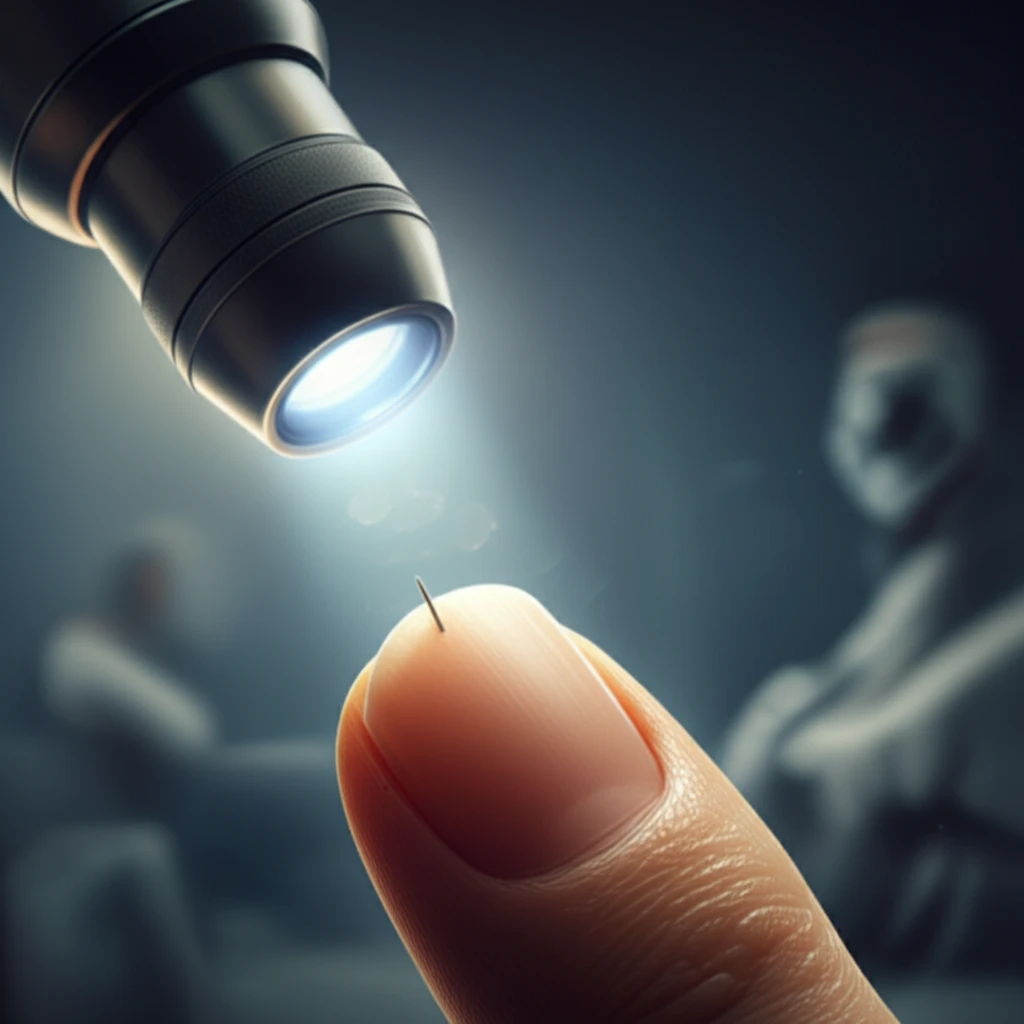
Dermoscopy: The Unexpected Key to Finding Hidden Splinters
"Learn how dermoscopy, a technique typically used for skin exams, can help doctors quickly and easily locate and remove subungual foreign bodies like splinters and fish bones."
Finding a splinter can be a minor nuisance, but when it's hidden deep under a fingernail, it can become a frustrating ordeal. Traditional methods often fall short, leaving you poking and prodding with limited success. But what if there was a better way? A technique usually reserved for examining moles and skin conditions might just be the answer: dermoscopy.
Dermoscopy is a non-invasive imaging technique that uses a special magnifying lens and light source to visualize the skin in greater detail. While it's primarily used by dermatologists to diagnose skin cancer and other skin disorders, its potential extends beyond the surface. Recent studies have shown that dermoscopy can also be a valuable tool for identifying and removing foreign bodies lodged beneath the nails – a condition known as subungual foreign bodies.
A recent report highlighted a case where dermoscopy successfully aided in the identification and removal of a fish bone embedded under a woman's fingernail. This case underscores the potential of dermoscopy as a quick, effective, and minimally invasive method for dealing with those pesky hidden splinters and other foreign objects that find their way under our nails.
The Case for Dermoscopy: A Clearer View of Hidden Objects

The case report, published in the journal Annals of Dermatology, details the experience of a 51-year-old woman who sought medical help after struggling to remove a fish bone splinter from her thumb. Despite her best efforts, she couldn't locate the foreign body, leading to persistent pain and discomfort.
- Enhanced Visualization: Dermoscopy provides a magnified and illuminated view of the area under the nail, making it easier to identify foreign bodies that are otherwise difficult to see.
- Non-Invasive: The procedure is entirely non-invasive, causing no pain or trauma to the patient.
- Quick and Efficient: Dermoscopy can be performed quickly and easily in a clinical setting, allowing for prompt diagnosis and treatment.
- Improved Accuracy: By providing a clearer view of the foreign body, dermoscopy helps to ensure complete removal, reducing the risk of complications such as infection.
A Promising Tool for Everyday Ailments
While dermoscopy is primarily used in dermatology, its application in identifying and removing subungual foreign bodies highlights its versatility as a diagnostic tool. For those frustrating moments when you can't seem to locate that tiny splinter, dermoscopy might just be the answer. Talk to your doctor or a dermatologist about whether dermoscopy could be a helpful option for you.
